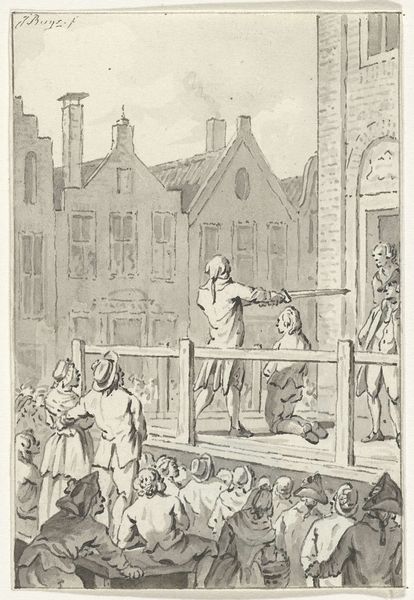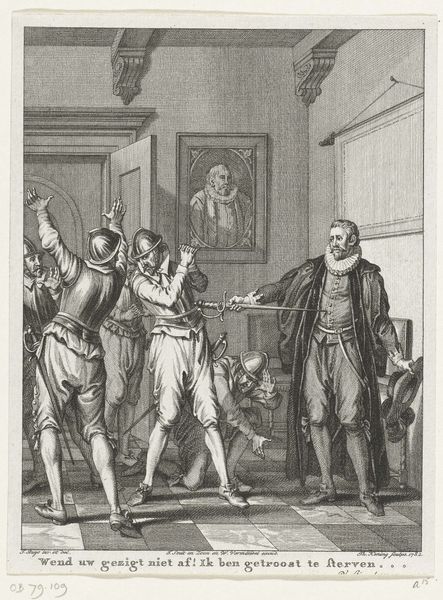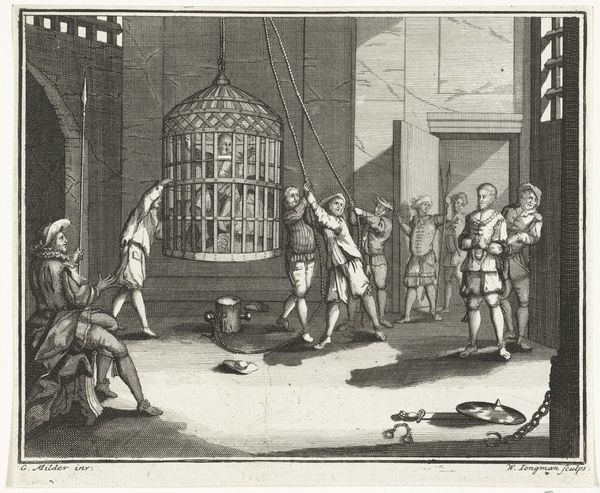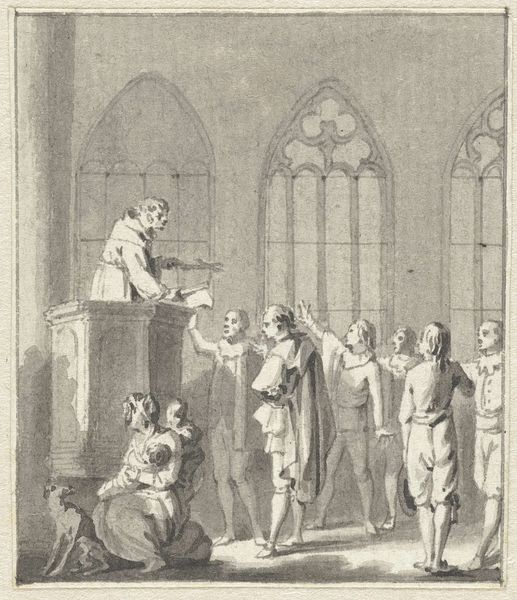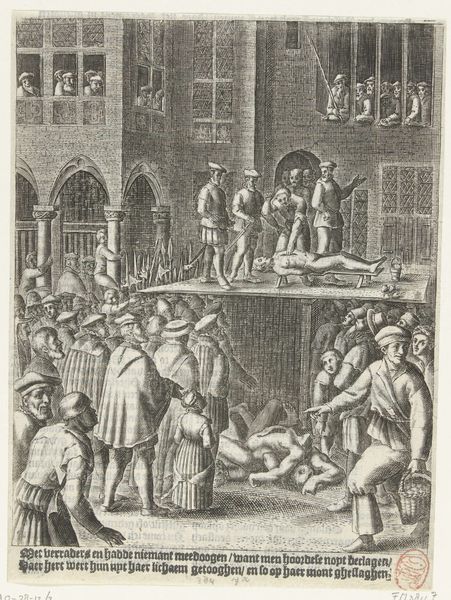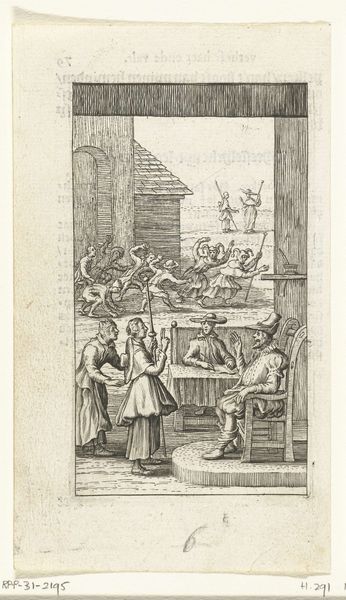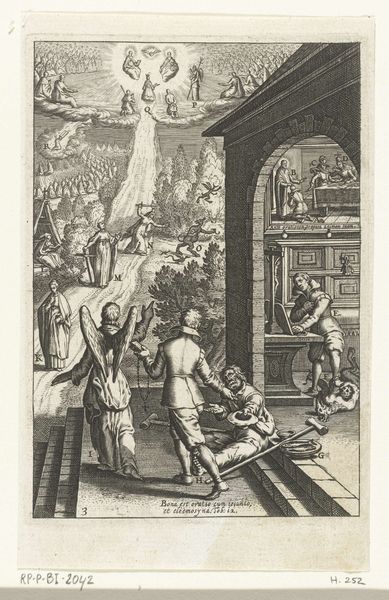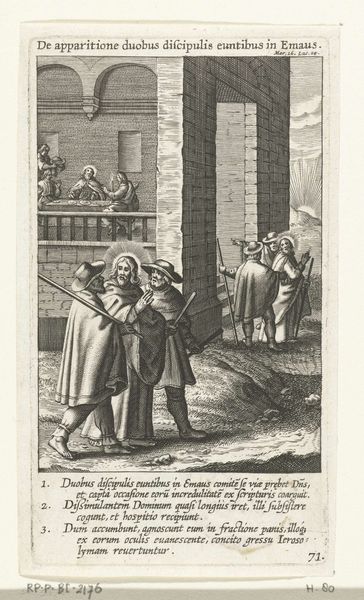
Dimensions: height 164 mm, width 93 mm
Copyright: Rijks Museum: Open Domain
This print, made by Theodoor Koning, depicts the beheading of Cornelis de Hooghe in the Netherlands in 1583. It is an image of public punishment, common in early modern Europe, capturing a moment laden with political and social meaning. The print illustrates more than just the act of execution. The setting—the 'Hof van Holland' or Court of Holland— situates the event within a system of justice and governance. Executions were public spectacles, serving as potent reminders of state power. Consider how the crowd's presence underscores the communal nature of justice in this period, with social order maintained through these events. Visual codes like the executioner's clothing, the placement of the kneeling figure, and the onlookers convey cultural attitudes towards crime, punishment, and authority. We can use such historical images to investigate the relationship between the state and its citizens. Through archival research, legal documents, and other primary source materials, we can better understand the intricate relationship between art and its social and institutional context.
Comments
No comments
Be the first to comment and join the conversation on the ultimate creative platform.
